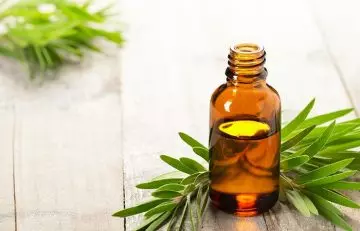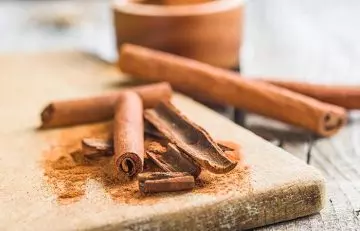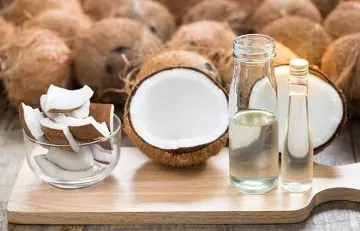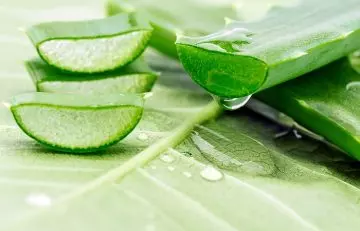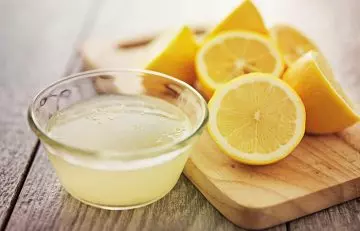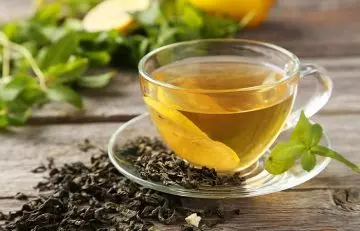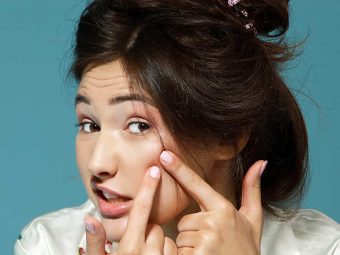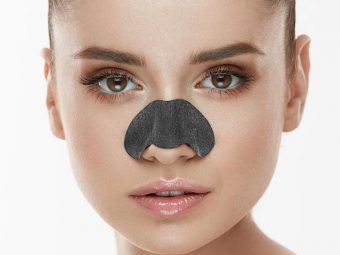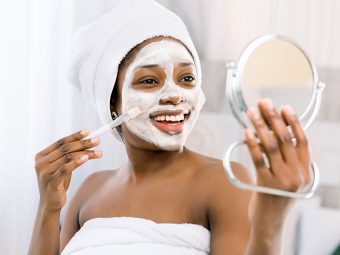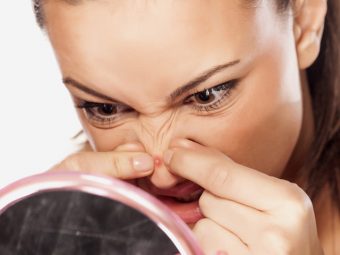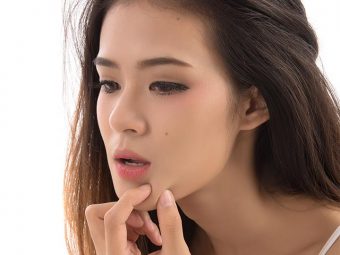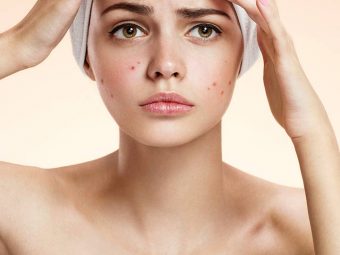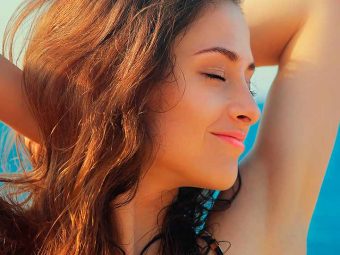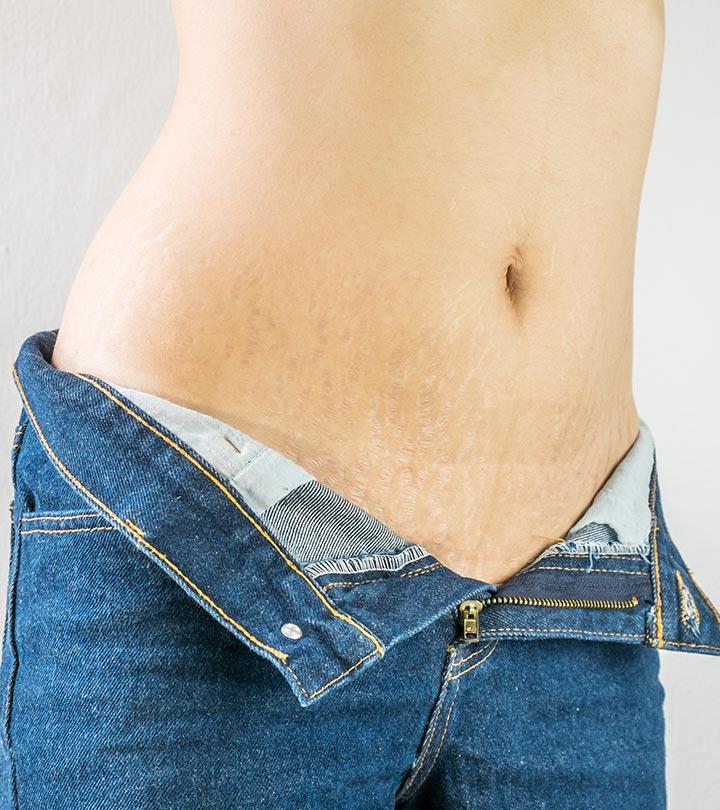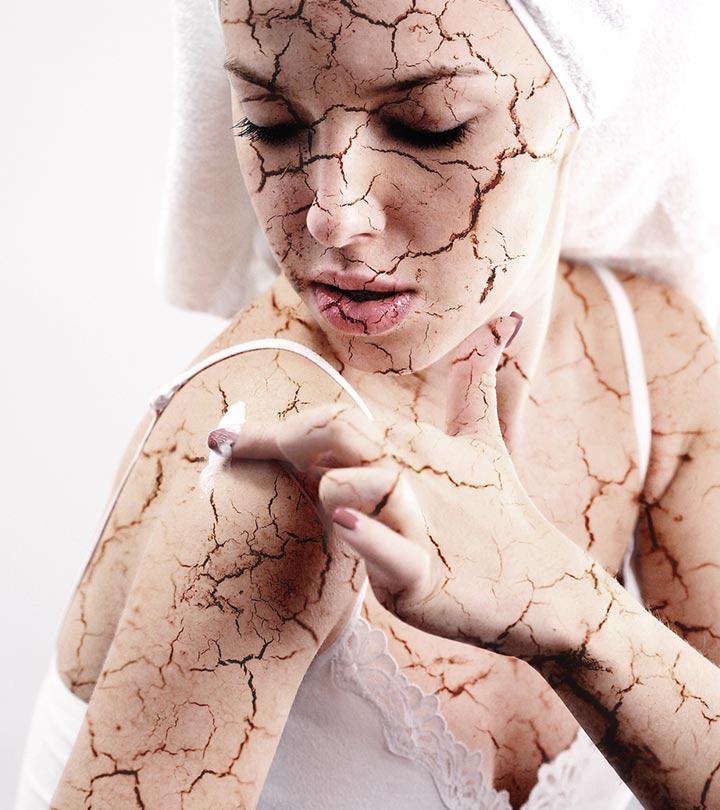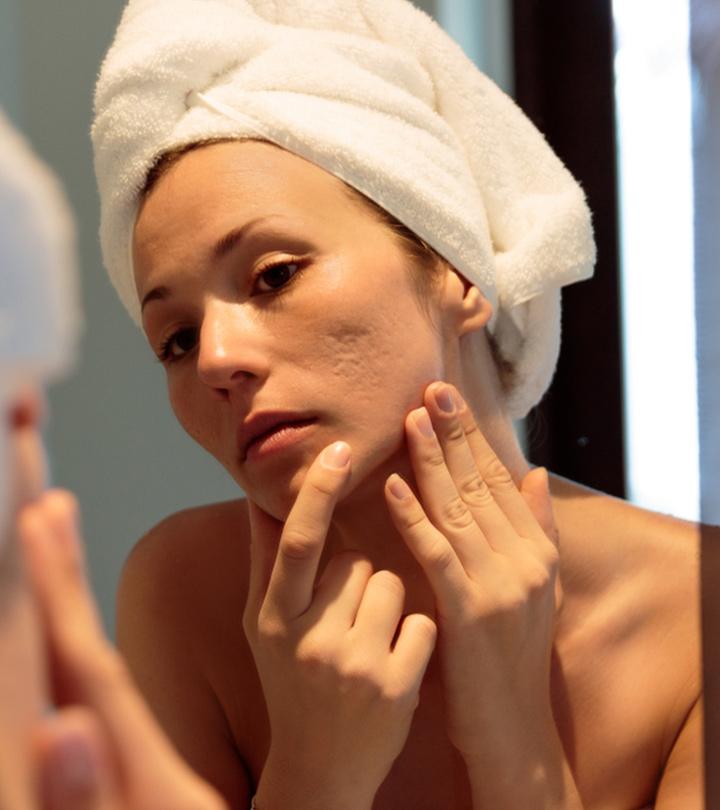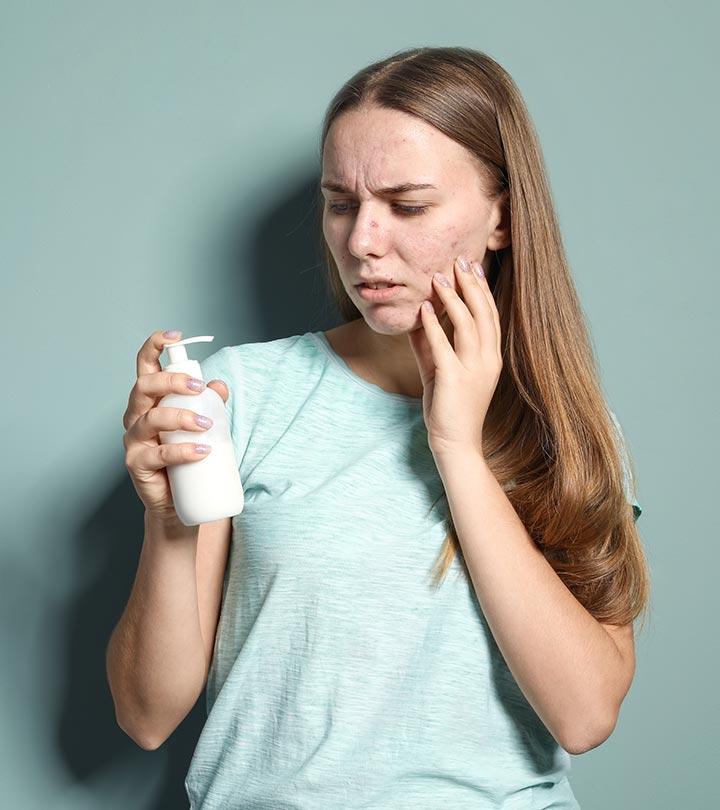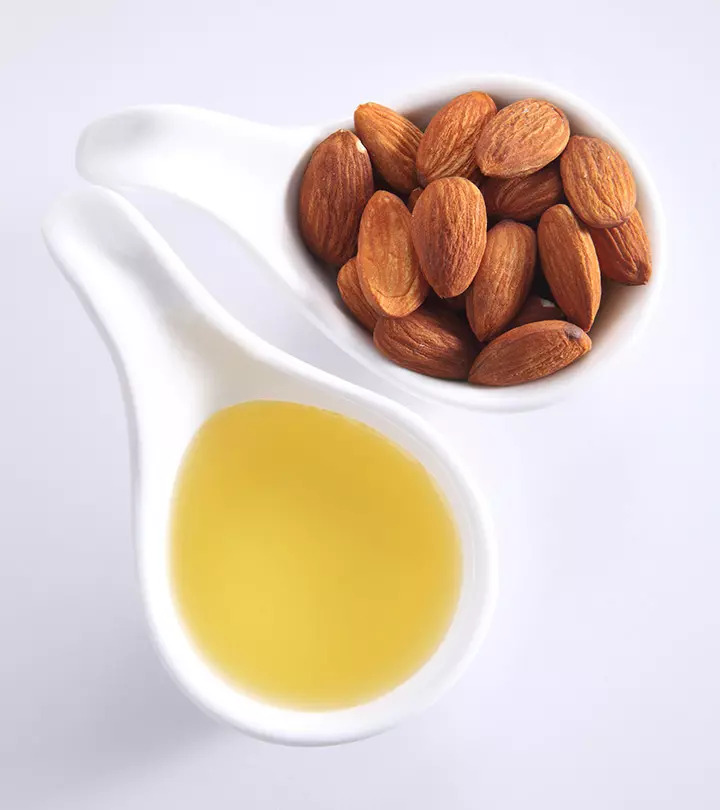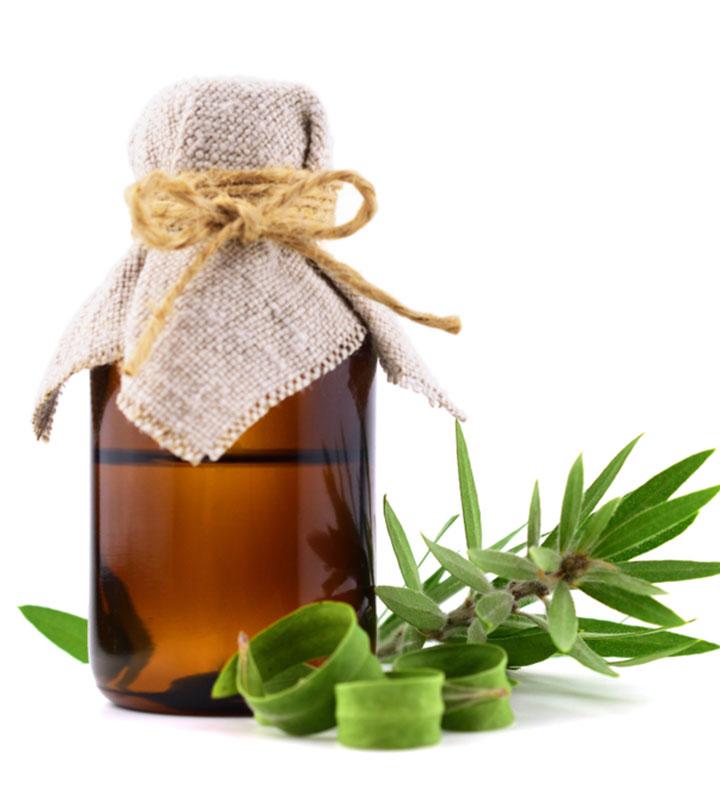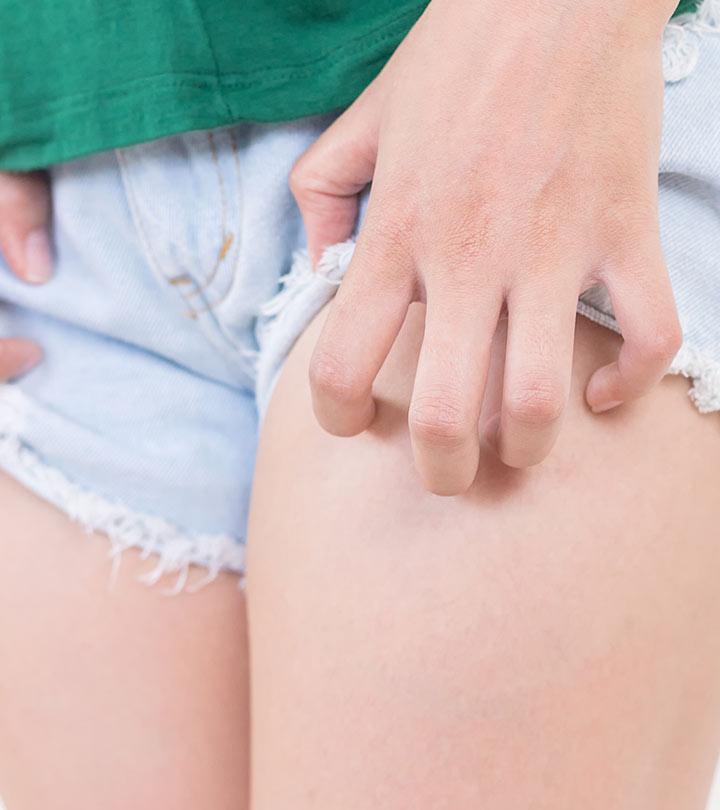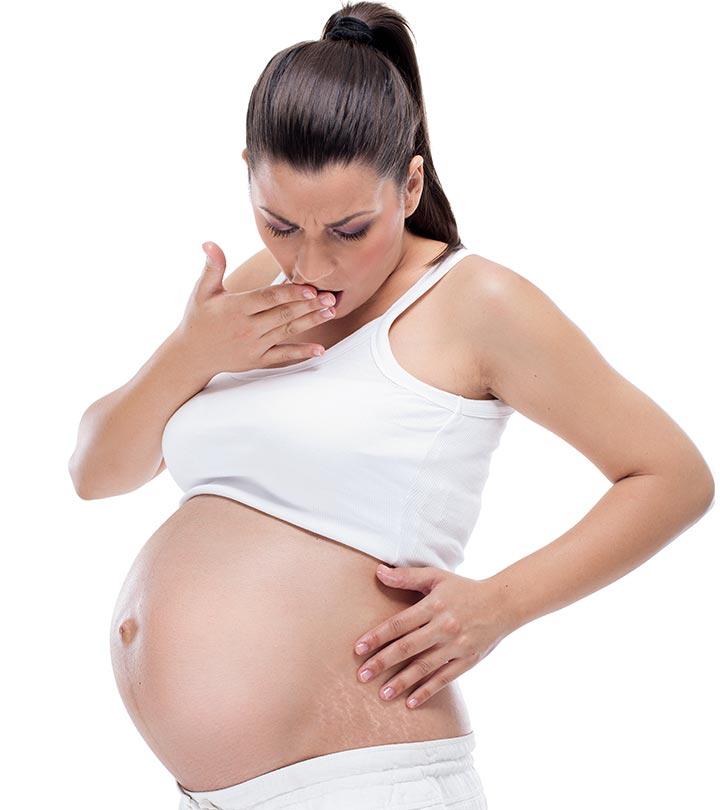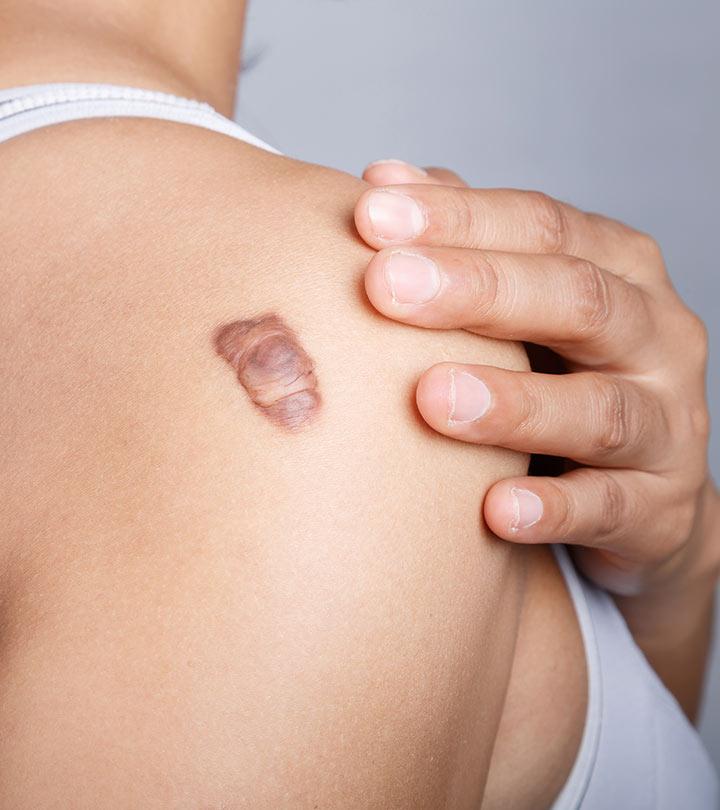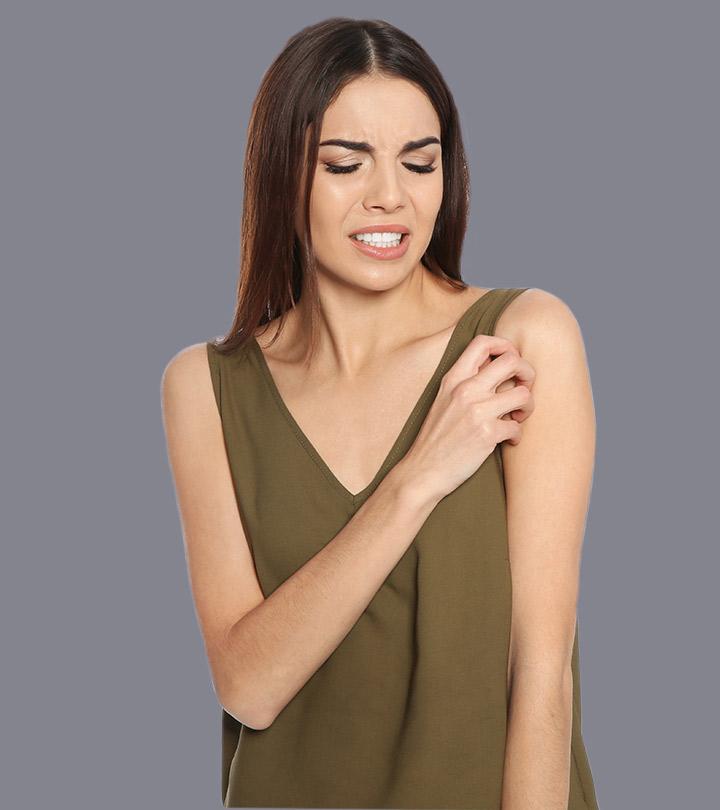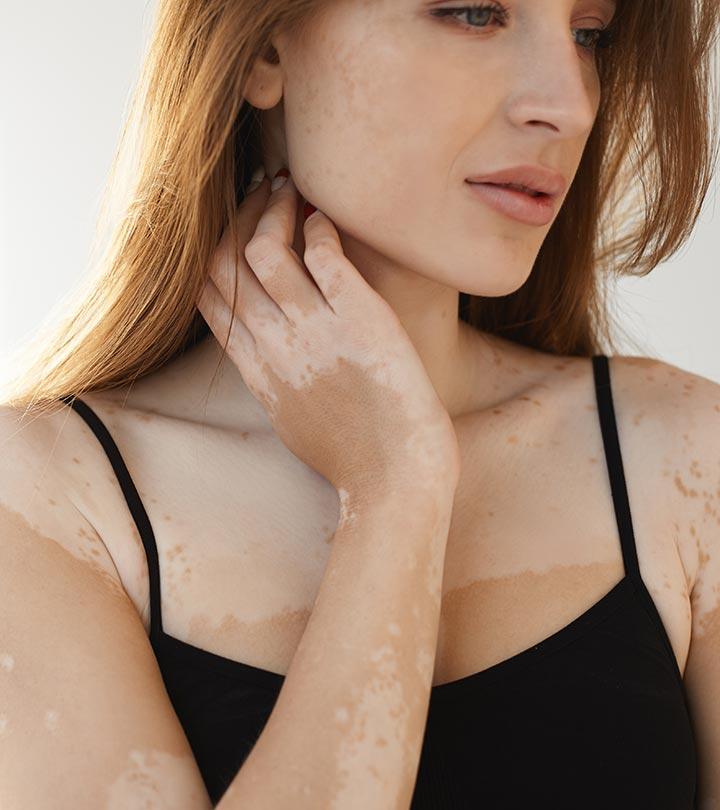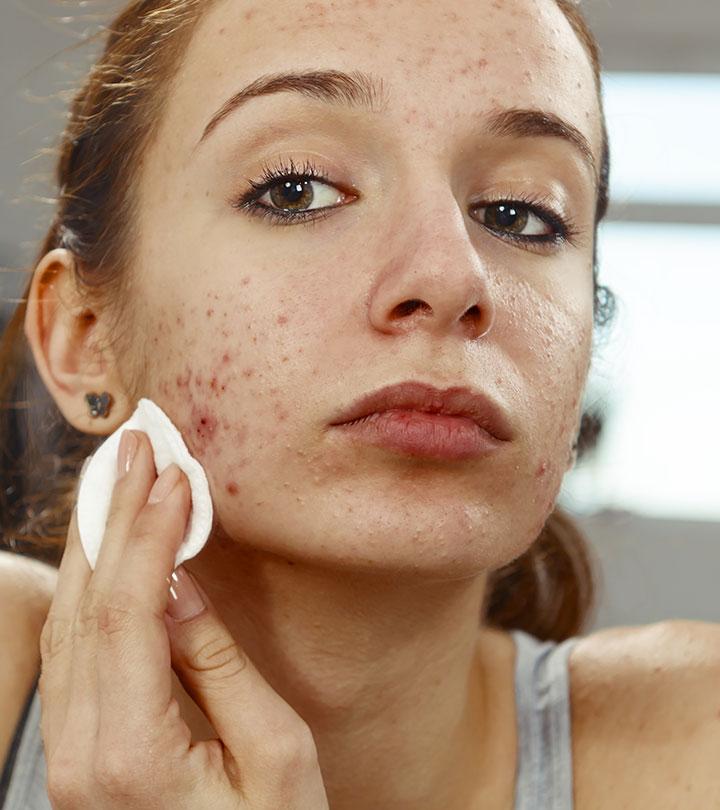Simple Home Remedies To Remove Blackheads
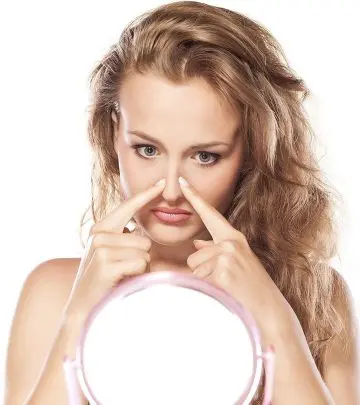
Image: Shutterstock
Blackheads are stubborn and tricky. You pick on one, only to notice a multitude of them returning later. While squeezing them out might sound like a fun thing to do, it can get overwhelming, especially when they keep coming back. Given your busy lifestyle, you probably cannot spare too much time for getting rid of those pesky blackheads on your face. What can you do?
In this post, we will discuss and share all you need to know about blackheads. More importantly, we have put together some effective and simple home remedies to help you tackle the problem. Scroll down to get started.
In This Article
What Is A Blackhead?
Our skin has pores that contain hair follicles. When these pores get clogged, the dead skin cells and sebum in the pores can get exposed to the air and get oxidized. On oxidation, these pores turn black and form blackheads.
Blackheads can appear on the face, neck, back, chest, arms, and even on the shoulders. Blackheads are a mild type of acne in which the acne lesion is not closed.
Discussed below are a few major causes of blackheads.
What Causes Blackheads?
- Hormonal changes: Around puberty, your body undergoes hormonal changes. There is an increase in sebum production by the sebaceous glands, which can trigger blackheads. Post puberty, hormonal changes due to menstruation, pregnancy, and use of birth control pills can also cause blackheads.
- Excessive production of skin cells can trigger blackheads.
- Using cosmetics can block the skin pores, thereby triggering blackheads.
- Excessive sweating can clog the pores on your skin and cause blackheads.
- Shaving parts of your body can expose the hair follicles.
- Health conditions like stress, PCOS, and even PMS can lead to the appearance of blackheads and acne.
How do you identify blackheads? Find out in the next section.
How To Identify Blackheads
You can tell that you have blackheads if you notice small, black lesions on your skin. Blackheads are characterized by a raised texture but are way smaller than pimples.
Blackheads can appear on your T-zone, cheeks, and other areas where sebaceous glands are present. They are not inflamed lesions and do not hurt. They are also not infected like pimples can be.
Blackheads can be spotted right on the surface of your skin and can eventually appear too dark on your skin. Not tackling them in the early stages can cause your face to look pigmented.
Let us now delve into the home remedies that can help you get rid of blackheads.
Home Remedies To Get Rid Of Blackheads
1. Tea Tree Oil
Tea tree oil has anti-comedogenic properties. It can be used topically to reduce the non-inflamed dark lesions on your skin (1). This may help in removing blackheads.
You Will Need
- 2-3 drops of tea tree oil
- Carrier oil
What You Have To Do
- Dab two to three drops of tea tree oil mixed with coconut oil on a cotton pad.
- Apply the oil to the blackhead prone area.
How Often You Should Do This
Repeat 3-4 times daily.
2. Strawberry
Strawberries are rich sources of vitamin C or ascorbic acid. Vitamin C helps keep the skin hydrated and moisturized (2). This reduces the occurrence of blackheads as dry and dead skin cells are eliminated.
You Will Need
- 2-3 strawberries
- ½ teaspoon honey
- ½ teaspoon lemon juice
What You Have To Do
- Mash the strawberries and add the lemon juice and honey to make a thick paste.
- Apply this paste on the areas prone to blackheads.
- Leave it on for 15-20 minutes before you rinse with plain water.
How Often You Should Do This
Repeat 2-3 times a week.
3. Cinnamon
The cinnamaldehyde in cinnamon can help increase the synthesis of collagen, thereby tightening the pores in your skin (3). This, in turn, may reduce the number of blackheads.
You Will Need
- 1 tablespoon of lemon juice
- 1 tablespoon of cinnamon powder
What You Have To Do
- Make a paste by mixing the cinnamon powder and lemon juice.
- Apply this paste on the blackhead prone areas.
- Rinse off after 20 minutes.
How Often You Should Do This
You can do this about 2-3 times a week.
Caution: Lemon juice can cause a stinging sensation. Make sure to carry out a patch test before trying this remedy out.
4. Coconut Oil
Coconut oil has moisturizing properties (4). This can help relieve dry skin and prevent the blockage of pores with dead and dry skin cells. The lauric acid in coconut oil can also prevent the occurrence of acne (5).
You Will Need
1 teaspoon of virgin coconut oil
What You Have To Do
- Apply a teaspoon of virgin coconut oil on the area with blackheads.
- Leave it on until it is fully absorbed into your skin.
How Often You Should Do This
Repeat 2 times daily until the blackheads vanish.
5. Aloe Vera
Aloe vera is well known for its moisturizing properties (6). Aloe vera also contains zinc that helps tighten pores and saponins that cleanse the skin. All of these properties can help keep blackheads at bay.
You Will Need
½ teaspoon of aloe vera gel
What You Have To Do
- Apply aloe vera gel to the areas prone to blackheads.
- Leave it on overnight and rinse off with water when you wake up.
How Often You Should Do This
Repeat this every day until the blackheads disappear.
6. Honey
Honey is one of the oldest natural remedies for skin infection and dry skin. It helps keep your skin hydrated and supple, thus preventing the clogging of pores with dry and dead skin cells (7). This, in turn, can help in getting rid of blackheads.
You Will Need
- Honey
- Cotton pad
What You Have To Do
- Take a cotton pad and dab honey on it.
- Apply this to the blackheads and wash off after 20 minutes.
How Often You Should Do This
Repeat this 3-4 times every week.
7. Lemon
Lemon is rich in vitamin C or ascorbic acid that exhibits moisturizing properties. This moisturizing effect can help eliminate dead and dry skin and prevent clogging of the pores in your skin, thereby getting rid of blackheads (8). It also increases collagen synthesis that helps tighten pores.
You Will Need
- 1 teaspoon honey
- 1 teaspoon lemon juice
What You Have To Do
- Mix a teaspoon each of lemon juice and honey.
- Apply this paste to the affected areas.
- Leave it on for about 15-20 minutes before rinsing it off.
How Often You Should Do This
Repeat daily.
Caution: Lemon juice can cause an allergic reaction in some people. You must do a patch test before you can follow this remedy.
8. Turmeric
Turmeric contains curcumin that can help in cleansing the pores in your skin due to its antibacterial properties (9). This can help mitigate the occurrence of blackheads.
You Will Need
- 1 teaspoon turmeric powder
- 1 teaspoon water
What You Have To Do
- Make a thick paste using turmeric powder and water.
- Apply this paste generously on the areas prone to blackheads.
- Wash thoroughly with plain water after it dries completely.
How Often You Should Do This
Apply this paste once daily.
9. Green Tea
Green tea contains polyphenols that can help regulate the secretion of sebum in your skin (10). This can prevent your skin pores from getting clogged and causing blackheads.
You Will Need
- Green tea bags
- Water
- Aloe vera gel
What You Have To Do
- Empty two tea bags and steep the contents in warm water.
- Mix the leaves with some aloe vera gel.
- Apply this pack on the affected areas.
- Leave it on for 10-15 minutes and then wash it off.
How Often You Should Do This
Apply this paste 2 times a week.
10. Jojoba Oil
Jojoba oil is used for its anti-inflammatory properties (11), (12). This can help in eliminating the lesions that occur due to blackheads.
You Will Need
- 2-3 drops of jojoba oil
- Cotton ball
- Carrier oil
What You Have To Do
- Mix the jojoba oil with a carrier like olive oil.
- Apply this to the areas prone to blackheads.
- Repeat this by using a new cotton ball for application.
How Often You Should Do This
Do this several times a week.
11. Castor Oil
Castor oil has ricinoleic acid that exhibits anti-inflammatory properties that can help reduce the inflamed lesions that cause blackheads (13).
You Will Need
- Boiled water
- 2-3 drops of castor oil
- Carrier oil
What You Have To Do
- Mix a few drops of castor oil with a carrier like coconut oil.
- Boil water and steam your face for about 5 minutes.
- Pat your face dry and apply oil on the areas where you have blackheads.
- Leave it on overnight and rinse the next morning thoroughly.
How Often You Should Do This
Do this 2 times every week until the blackheads vanish.
12. Tomato
Tomatoes are rich in bioactive compounds that exhibit antibacterial properties (14), (15). This can help cleanse the pores in your skin and prevent the occurrence of blackheads.
You Will Need
- 1 teaspoon lemon juice
- 1-2 tomatoes
What You Have To Do
- Mash the tomatoes to prepare a thick paste.
- Add a teaspoon of lemon juice to this.
- Apply it to all the affected areas.
- Leave it on for 15-20 minutes and then wash off with cold water.
How Often You Should Do This
Apply this paste 1-2 times a week.
Caution: Lemon juice can cause an allergic reaction, so you must do a patch test before trying this out.
Try any or a combination of the above remedies and bid goodbye to blackheads. Listed below are a few tips that can help prevent the occurrence of blackheads.
How Can I Prevent Blackheads?
- Make sure to keep your skin oil-free and clean at all times.
- Avoid excessive use of cosmetic products.
- Make sure to use non-comedogenic products so that your pores are not clogged.
- Don’t wear clothes that are too tight as that can trap the sweat.
- Avoid sleeping with your makeup on.
- Do not consume foods that can cause excessive production of sebum. These foods include processed foods, dairy products, fast foods, etc.
These tips and remedies will help you get rid of blackheads. However, if you think that your skin has other underlying issues that lead to the recurrence of blackheads, you must consult a dermatologist.
We hope that you found this post helpful. Let us know your feedback in the comments section below.
Frequently Asked Questions
What is the difference between blackheads and whiteheads?
Blackheads and whiteheads are similar, given that both are caused when dead skin cells and oil clog the pores in your skin. The difference is that blackheads are formed when the pores remain open, while whiteheads occur when the debris closes the pores.
Medically, blackheads are known as open comedones, while whiteheads are known as closed comedones.
The most obvious difference between the two is that blackheads have a dark brown appearance while whiteheads have a yellowish tint.
What to do after removing a blackhead?
Usually, to remove blackheads, you would have to steam your face for 5 minutes or place a warm and damp washcloth on your face. This opens up the pores to facilitate easy blackhead removal. Once you have removed the blackheads, you must wash your face with plain or cold water and pat it dry.
Does toothpaste get rid of blackheads?
Mint toothpaste can be used to remove blackheads. The mint in the toothpaste can help open clogged pores and cleanse it deeply. Remember to use an ice cube over the area after removing blackheads to close the pores.
What is the white stuff that comes out of a blackhead?
The pores in your skin collect debris of dry and dead skin cells along with sebum oil. If the pores are open, all of this gets oxidized and forms the white stuff that comes out of blackheads.
Where can we find blackheads?
Blackheads can be found in areas where sebaceous glands are present – like the face, neck, back, chest, arms, etc.
What are the best products for blackheads?
For this, you could use an over-the-counter product that is suited for your skin type and recommended by your dermatologist. You can also use these scrubs and face washes. Alternatively, you could try out any of the home remedies that have been shared in the post above.
Which foods cause blackheads?
Foods that are refined or processed, dairy products, artificially sweetened drinks, and foods rich in omega-3 fatty acids can increase the sebum production in your skin, thereby increasing the chance of having blackheads.
Do pore strips remove blackheads?
Pore strips stick on to your skin and pull off the dry, dead skin cells as well as blackheads if any. However, this is not a permanent solution as it only temporarily reduces the appearance of blackheads.
What happens if you leave a blackhead alone?
Sometimes, the blackheads may be there on your skin for a few weeks before your body can naturally push them out. If the blackhead is more prominent, you may need to get it extracted by your dermatologist.
Does squeezing a blackhead damage a pore or relieve it?
Squeezing a blackhead can cause damage to your pores. If there are bacteria present in the pore walls, squeezing might risk spreading the bacteria to the surrounding tissues, which eventually causes acne.
References
Articles on StyleCraze are backed by verified information from peer-reviewed and academic research papers, reputed organizations, research institutions, and medical associations to ensure accuracy and relevance. Read our editorial policy to learn more.
- The Medical Journal of Australia, US National Library of Medicine, National Institutes of Health.
“A comparative study of tea-tree oil versus benzoyl peroxide in the treatment of acne.” - Journal of Cosmetic Dermatology, US National Library of Medicine, National Institutes of Health.
“An evaluation of the antiaging properties of strawberry hydrolysate treatment enriched with L-ascorbic acid applied with microneedle mesotherapy.” - Evidence-Based Complementary and Alternative Medicine, US National Library of Medicine, National Institutes of Health.
“Skin Ageing: Natural Weapons and Strategies” - Dermatitis, US National Library of Medicine, National Institutes of Health.
“A randomized double-blind controlled trial comparing extra virgin coconut oil with mineral oil as a moisturizer for mild to moderate xerosis.” - Biomaterials, US National Library of Medicine, National Institutes of Health.
“The antimicrobial activity of liposomal lauric acids against Propionibacterium acnes.” - Indian Journal of Dermatology, US National Library of Medicine, National Institutes of Health.
“ALOE VERA: A SHORT REVIEW” - Ayu, US National Library of Medicine, National Institutes of Health.
“Medicinal and cosmetic uses of Bee’s Honey – A review” - International Journal of Molecular Science, US National Library of Medicine, National Institutes of Health.
“Biological Activities and Safety of Citrus spp. Essential Oils” - Herbal Medicine: Biomolecular and Clinical Aspects, 2nd Edition, US National Library of Medicine, National Institutes of Health.
“Turmeric, the Golden Spice” - MDPI, US National Library of Medicine, National Institutes of Health.
“Green Tea and Other Tea Polyphenols: Effects on Sebum Production and Acne Vulgaris” - Complementary Medicine Research, US National Library of Medicine, National Institutes of Health.
“Clay jojoba oil facial mask for lesioned skin and mild acne–results of a prospective, observational pilot study.” - Giornale Italiano di Dermatologia e Venereologia, US National Library of Medicine, National Institutes of Health.
“Jojoba in dermatology: a succinct review.” - Asian Pacific Journal of Tropical Medicine.
“Therapeutic role of Ricinus communis L. and its bioactive compounds in disease prevention and treatment” - Zhurnal Mikrobiologii, Epidemiologii, i Immunobiologii, US National Library of Medicine, National Institutes of Health.
“Experimental evaluation of the antibacterial activity of tomato pulp oil extract” - Proceedings of the Society for Experimental Biology and Medicine, US National Library of Medicine, National Institutes of Health.
“Nutrient content of tomatoes and tomato products.”


